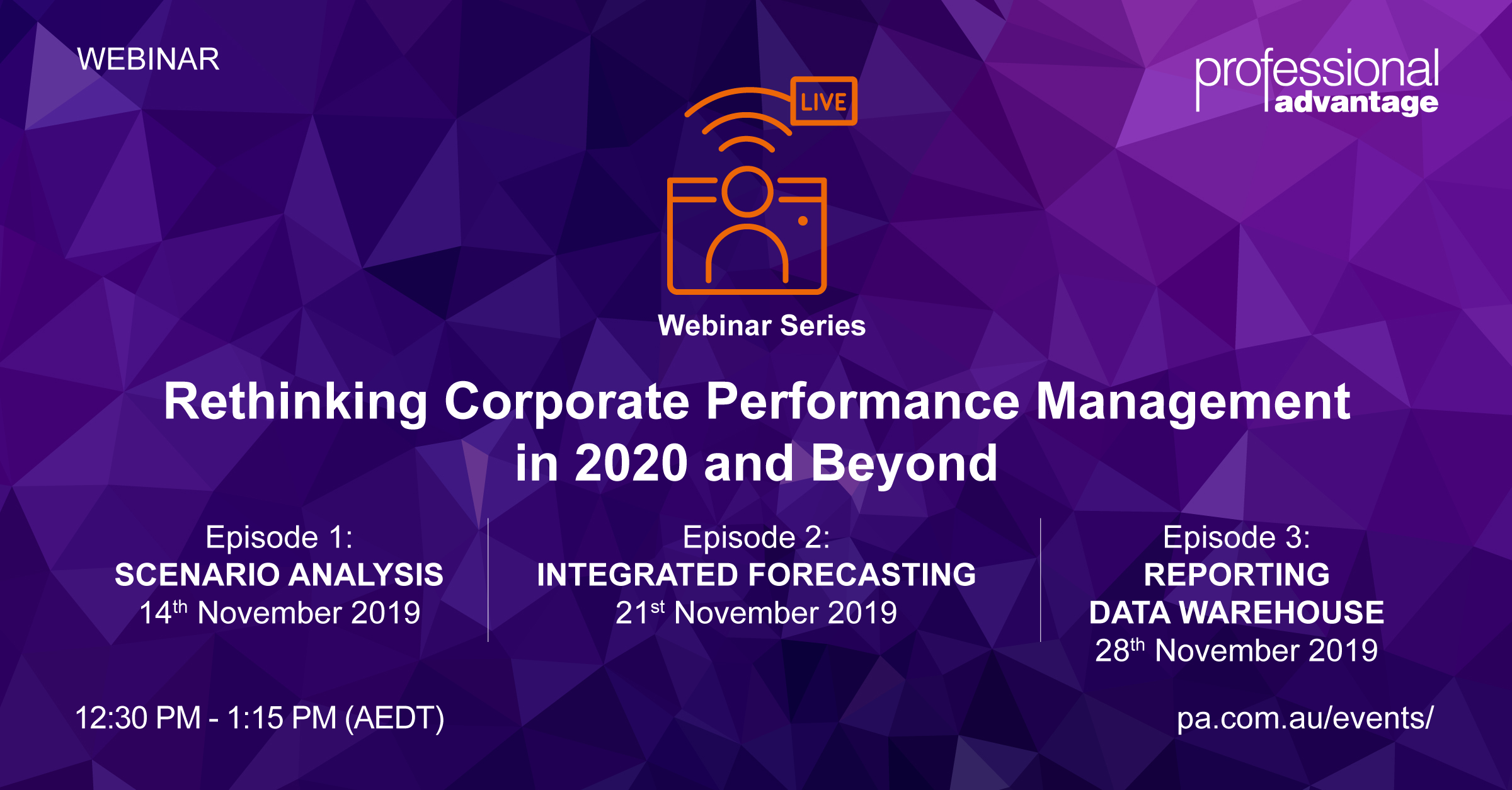Organisations are constantly in the battle to improve the use of resources in what can be described as the survive and thrive pendulum. On one hand, your organisation is constantly calibrating its position in the market to survive any unforeseen circumstances; on the other hand, you’re on the look out to navigate to safe harbours to harvest, thrive, and share in your success.
Your investment in an Integrated Business Planning (IBP) and Business Intelligence (BI) asset becomes a central tool in the survive and thrive pendulum.
A well-planned investment in IBP and BI becomes a navigational link between strategic planning and strategy execution. You will leverage the tool to align the capacity, capability, and resources with planned actions. Primarily your budget planning tool will provide the insights to achieve your organisational outcomes and the goals of your stakeholders.
Like all physical assets, the appropriate care and attention optimises the intrinsic value of the IBP and BI asset.
How to extend the useful life of your Budget Planning and Business Intelligence software and maximise the return on investment.
There are four elements you must consider when optimising the IBP and BI return on investment.
1. Design to last, built to mirror business workflow.
Where a planning tool is designed to reflect business workflow, locations, machinery, resource inputs, and job roles, each key factor can be substituted over time. This may reach the point where, after a few iterations, the business workflow may not resemble the original design.
However, with your IBP and BI asset designed to accommodate the change in business factors, the useful life of the investment extends and the value to the system is enhanced.
Avoid building your IBP and BI system around individual roles, key users, or being finance department centric. Organisational structures, people, roles, and responsibilities change regularly in most environments. Change in personnel and responsibilities may create a disconnect between the architecture of the tool and the organisations service/product delivery workflow. The greater the disconnect, the shorter the useful life of your IBP and BI investment.
2. Knowledge repository.
Create and regularly update the knowledge repository of standard processes and common change requests. Your IBP and BI tool will, more often than not, outlive the staff members who initially implemented the system. To ensure the optimal use of the tool beyond the initial implementation team, the documentation of standard processes is a must. This documentation may include, but not be limited to:
- Quarterly rollover.
- Annual rollover.
- Data connections and refresh.
- Addition of new data dimensions such as profit, cost centres, and GL codes.
- Transfer of departments or cost centre cohorts.
- New calculations.
- New processes.
- New business assumptions.
- Consolidations.
- Add and change in user access.
- Systems map (how each module interrelates).
3. Nurture your IBP and BI asset.
Your IBP and BI asset is a living system. As your organisation grows you may:
- Acquire new businesses or services.
- Consolidate departments.
- Develop new branches
- Create new products.
- Divest old business.
- All of the above.
Your IBP and BI asset needs the nurturing to reflect the changes in circumstances.
The IBP and BI asset is a central tool for resource planning and decision making to deliver strategy. As a result, the asset needs to be maintained at every turn to reflect the changing organisational requirements and ways of working.
Ensure all feedback and user requests from the business (in particularly any manual work arounds) are listed as change requests to be actioned at the end of each planning cycle. Each change request needs to be completed prior to the next planning cycle.
4. Guardians of continuity, not just the Super User.
The fourth element to consider to optimise the return on your IBP and BI investment is to shift the focus of the internal “Super Users”.
The Super Users are often the go-to individuals to enhance user experience. They have the knowledge of how the tool works, and how to input, extract, and present information in the desired manner.
However, an organisation should align focus of the “Super Users” to instead become “Guardians” of the IBP and BI assets; the people who “protect the longevity of the asset”.
Redirect the focus of the Super Users to ensure they are responsible and accountable for updates in internal process documentation; they become champions of knowledge sharing; and action continual development of the tool as required by changes in the business .
Challenge the Super Users to reference their actions in their personal development and review processes.
By incorporating the four principles of Design, Knowledge, Nurture, and Guardians in your IBP and BI assets, your organisation will take the necessary steps to compound the competitive advantages from your IBP investment.
To enhance your return on investment in your Integrated Business Planning and Business Intelligence asset, speak to Professional Advantage today.
How can your organisation benefit from implementing scenario budget planning and forecasting?
Join us for the on-demand Rethinking Corporate Performance Management in 2020 and Beyond webinar series to learn more!
 Join business solutions experts Chris Catto and Rebecca Gatehouse to discuss how to leverage the latest CPM techniques and tools to drive better business results.
Join business solutions experts Chris Catto and Rebecca Gatehouse to discuss how to leverage the latest CPM techniques and tools to drive better business results.







